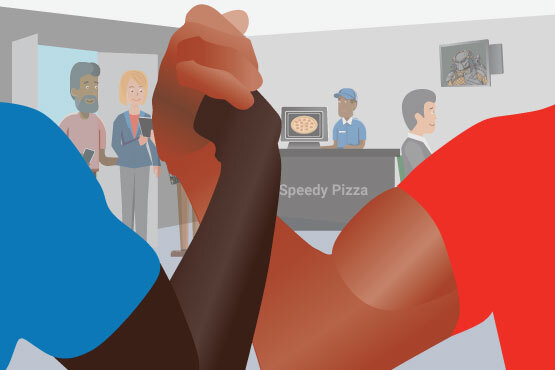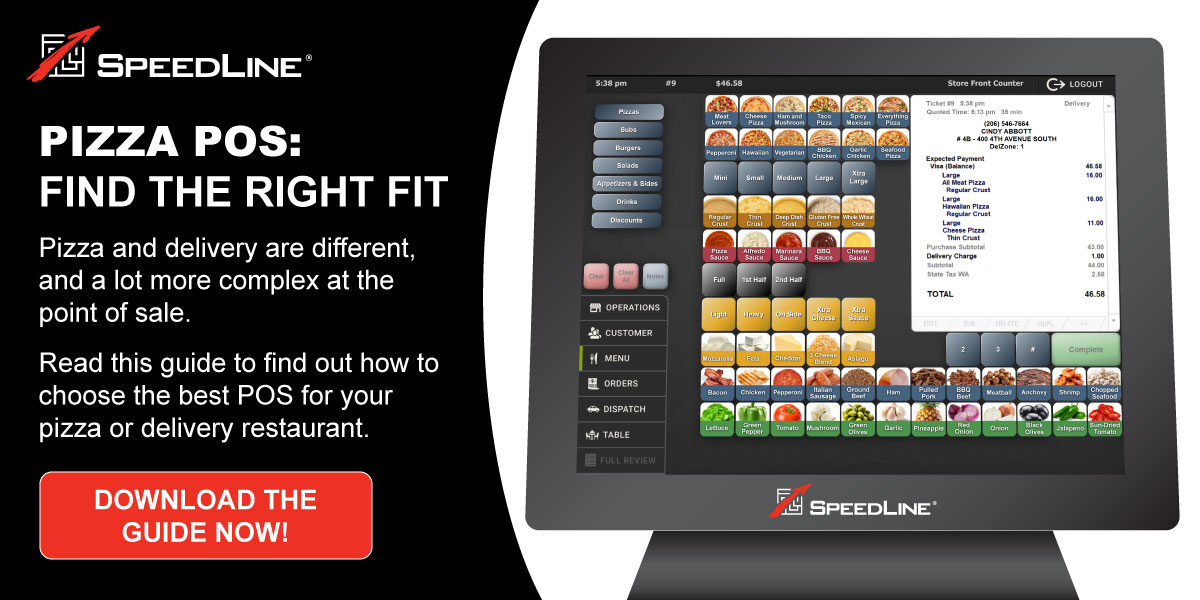Many businesses claim they're "like a family," but how often is this actually the case? Far too many pizzerias foster a competitive atmosphere where the pizza restaurant employees see each other as more competition than friends or teammates.
Competition hurts the development of workplace relationships, but it can also bleed into the customer experience. It is estimated that if every employee simply had one best-friend coworker, it would result in a 7% boost in customer satisfaction. Unfortunately, having coworker friends is a struggle within the restaurant industry, with the average restaurant employee having only 4 workplace friends, which is in the bottom 20% of all industries. That’s why it’s in your best interest to take the following secret tips and use them to improve the amount of teamwork at your pizzeria.
1. Clarify Each Position’s Responsibilities
There’s an epidemic of “not my problem” attitudes within the restaurant industry. And while you might think that defining and limiting a person’s responsibilities might worsen this problem, it tends to have the opposite effect.
When it's unclear who is responsible for a specific task, you can often get the wrong person doing that job and taking on more work than is reasonable for their position. Or just as bad, not doing a task because they don't know it belongs to them and it stays undone, creating animosity with other employees.

With 54% of employees feeling overworked, it’s best not to repeatedly saddle them with something that isn’t in their job description.
You can avoid either of these unwanted situations by clearly explaining what every position is responsible for doing. Staff knowing their duties help you limit the “not my problem” mentality by making it evident if something is actually that person’s problem or not.
2. Create Recognition Programs
When someone doesn’t feel valued, they’re far less likely to want to go above and beyond their regular duties when working at a pizza place. This has a severe impact on the amount of teamwork you’re likely to see during the average shift.
The solution to this is creating an employee recognition program that makes sure hard work is properly valued. Set up an employee of the month contest where employees nominate one another to receive a little prize. And as an owner or manager, you should be on the lookout for acts of teamwork and hand out a kind word to anyone who helps out a coworker.
3. Gather Feedback and Create Open Lines of Communication
Even the best owners/managers aren’t omniscient. That’s why you need to have adequate communication tools readily available for your staff to talk to their superiors. If there is a problem, it’s important to know about it as soon as possible so that you can take steps to solve it. Likewise, any areas could be improved or need to be acknowledged, your staff needs to be able to communicate this as well. Without these proper communication channels, your employees can feel like they’re stranded alone on an island rather than part of a full-fledged team.
There are a few things you can do to help reach this desired level of internal communication. The first option is to set up a suggestion box system where employees submit comments, concerns, or acknowledgments of fellow employees. You can also institute an open-door policy at work where staff members always feel welcome to stop by the office and chat with the owner or manager.
Something that often gets overlooked in a restaurant’s communication plan is the presence of a checks and balances system. Even with an open-door policy, your staff won’t speak up about any concerns if they are worried about retributions, for example, from a specific manager, especially if it is about that manager. It's important to make contact information of all management/owners accessible to employees to keep management accountable and prevent ineffective or biased leadership.
4. Make Your Processes More Efficient
Employees are only as effective as the tools they’re provided. So if your staff doesn’t have tools to encourage collaboration, they’ll be far less likely to work together.
The first thing to look at is whether you can streamline your food prep or customer service processes. If you have a lot of unnecessary crossover happening in the kitchen, where one employee is doing a task that could (and should) be handled by another employee, then this should be fixed. Having unnecessarily complicated food prep will make the restaurant staff more frustrated and less likely to jump into the middle of these complex processes to help a coworker. The same applies to the restaurant processes after the food is ready, including its delivery or the table-side service.
Once you’ve simplified all of your processes as much as possible, you can look into acquiring other forms of technology that allow you to provide even better service and promote teamwork among your employees. For example, having a point-of-sale system with graphical table service floor plans and visual service cues will help clarify when one of your team members needs assistance. These color-coded maps will provide your staff with real-time signals indicating a table's status, whether seated, ordered, or served. The alerts let your staff and managers know who needs immediate assistance and what these customers need to avoid becoming upset. It also makes it obvious if a server is handling more than their share of tables or guests, so another server can jump in and help them out.
By clarifying job roles, setting up an employee recognition program, promoting open communication, and integrating more efficient POS technology, you can turn your restaurant into a happy little community where people are always willing to lend a hand to those in need. Happier staff will inevitably lead to happier customers. And if you’re looking for other ways to make your customers happier, check out this webinar on how to improve customer satisfaction by shifting your focus.
Posted on Mon, Mar 28, 2022 @ 08:03 AM.
Updated on June 22, 2022 @ 8:22 PM PST.


